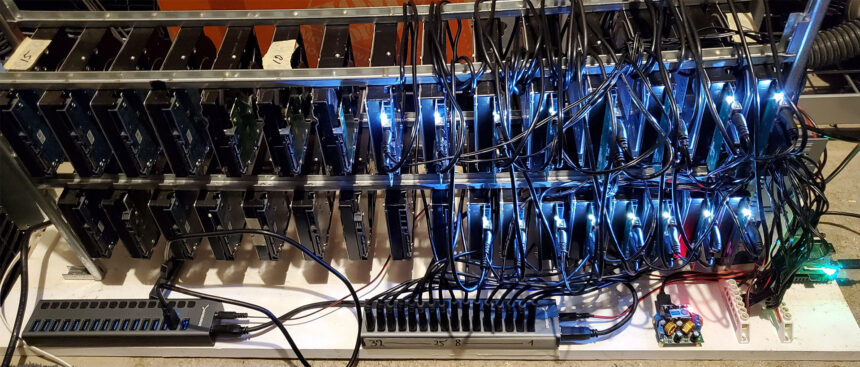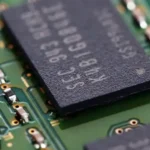The Promise of Proof-of-Space and a Hard Reality Check
When the concept of Chia crypto farming first burst onto the scene, it was hailed as a revolutionary and environmentally friendly alternative to traditional cryptocurrency mining. Unlike Bitcoin’s energy-intensive “proof-of-work” model, Chia’s “proof-of-space-and-time” was a beacon of sustainability.
The idea was simple and elegant: instead of using massive amounts of electricity to solve complex mathematical problems, you would use your computer’s unused storage space to farm new coins.
It seemed like a win-win situation for both crypto enthusiasts and the planet. However, as with all things that seem too good to be true, there was a hidden cost. This green crypto’s dirty secret, as many farmers have discovered, is its voracious appetite for solid-state drive (SSD) endurance.
The very process designed to be less resource-intensive on the energy front is, in fact, incredibly destructive to the hardware it relies upon, leading to a new kind of e-waste problem.
The Mechanics of a Digital Sledgehammer
To fully grasp why Chia is so brutal on SSDs, one must understand the fundamental process of “plotting.” Plotting is the act of creating large, cryptographic data files, which are then stored and used to farm Chia coins.
A single plot file is approximately 101.4 gigabytes (GB) in size, but the creation of that file is far from a simple copy-and-paste operation. It’s a complex, multi-stage process that involves massive amounts of reading and writing, creating and deleting temporary files in a rapid-fire sequence.
This is where the term “Terabytes Written” (TBW) becomes critically important. Every SSD has a finite lifespan, measured by its TBW rating the total amount of data that can be written to the drive before its cells begin to fail.
While a consumer-grade 1TB SSD might have a TBW of around 600 terabytes, a single Chia plot can generate up to 1.6 TB of writes during its creation.
This means that a drive’s entire lifespan, which is designed to last for years under normal usage, can be consumed in a matter of weeks or even days by continuous Chia plotting.
This relentless, high-volume activity puts an immense and unsustainable strain on the SSD’s NAND flash memory cells, causing them to wear out at an alarmingly accelerated rate. The wear-leveling algorithms designed to protect the drive simply cannot keep up with the overwhelming workload, leading to premature and often catastrophic failure.
The Unspoken Cost of Sustainability: Hardware Failure and Voided Warranties
The fallout from Chia’s intense write cycles has been swift and severe. For many individuals who entered the world of Chia crypto farming with consumer-grade SSDs, the experience has been a costly lesson in hardware limitations.
Drives have failed at an unprecedented rate, leaving farmers with a pile of useless hardware and a significant financial loss. This issue has not gone unnoticed by the industry.
Major manufacturers have been quick to issue warnings, with many clarifying that their product warranties do not cover damage resulting from intensive cryptocurrency mining.
This leaves consumers with no recourse for a failed drive, compounding the financial risk of entering the Chia ecosystem.
Beyond the individual financial losses, there is a broader environmental concern. While Chia was marketed as a sustainable alternative, the potential for mass-produced e-waste from prematurely killed SSDs is a serious environmental drawback.
Instead of a handful of GPUs consuming a lot of power over several years, we are faced with a future of millions of SSDs being rendered useless in a short span of time, contributing to a growing global problem of electronic waste that is both difficult and costly to recycle.
Protecting Your Investment: Practical Strategies for the Prudent Farmer
Despite the risks, the appeal of Chia crypto farming remains strong. For those who still wish to participate, there are effective strategies to mitigate the damage and protect your hardware. The most critical piece of advice is to never use a consumer-grade SSD for intensive plotting.
These drives are simply not built for the workload. The best practice is to invest in enterprise-grade SSDs or those specifically designed for high-write environments. These drives have a significantly higher TBW rating and are far better equipped to handle the demands of plotting.
Another highly effective and more affordable strategy is to utilize a two-tier storage system: use a high-endurance SSD or even a RAM disk for the temporary plotting phase, and then transfer the completed plots to a traditional hard disk drive (HDD) for long-term storage and farming.
HDDs are not susceptible to the same kind of write-cycle wear as SSDs and are much more cost-effective for the vast storage space required for farming.
Furthermore, utilizing optimized plotting software, such as MadMax, can significantly reduce the number of writes required to create a plot, thereby easing the burden on your drive.
Finally, it is imperative to use monitoring tools to keep a close eye on your drive’s health and TBW consumption. This will provide valuable data on your drive’s remaining lifespan, allowing you to plan for its eventual replacement and avoid sudden, unexpected failures.
The Final Word: A New Kind of Compromise
The story of Chia crypto farming and its impact on SSDs is a powerful lesson in the unintended consequences of new technology. What started as a promising, eco-friendly alternative to traditional mining has revealed a hidden hardware cost.
It highlights that the pursuit of a greener cryptocurrency often involves a new set of compromises. While the energy-intensive nature of other cryptos is a valid concern, the high-wear, e-waste-generating nature of Chia’s plotting process is a problem that should not be overlooked.
For the dedicated farmer, the path forward is clear: be smart about your hardware choices, understand the limitations of your equipment, and prioritize endurance over a lower upfront cost.
By doing so, you can participate in the Chia revolution without contributing to a new wave of electronic waste, ensuring that the promise of a more sustainable crypto future isn’t undermined by the destruction of the very devices that make it possible.








